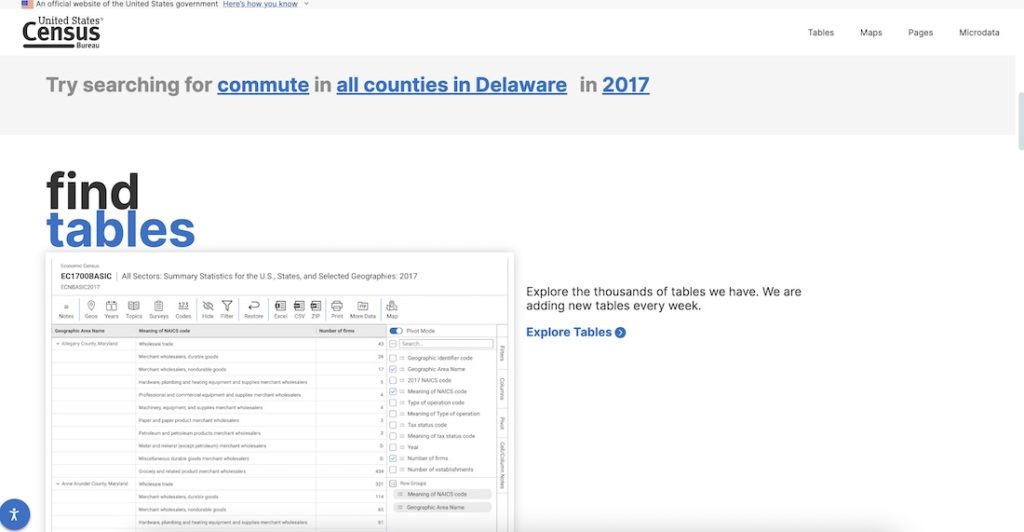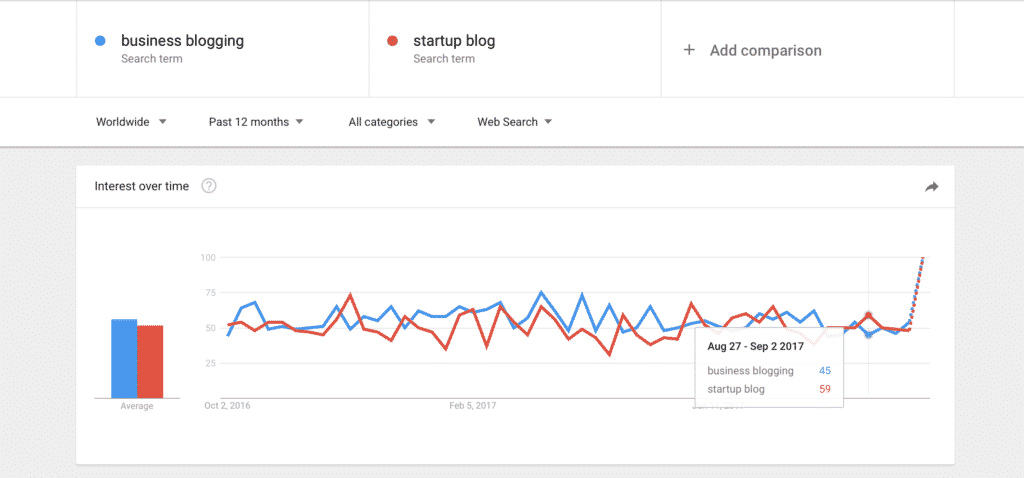So, your startup is growing, and you’re looking to take that next step as a business. Start a company blog to build your SEO, create compelling stories, and build your content database.
HubSpot notes that businesses that blog have approximately 97% more inbound links to their site!
Coming to this realization is the easy part. The trick is knowing how to go about the process—and let us tell you, it’s multi-faceted and even overwhelming at points.
“How do I get started? How do I develop quality content consistently? Will folks even pay attention if I do?”
These concerns are understandable and justified. Sixty-three-percent of those surveyed in 2017 suggest that generating online traffic and leads remains their company’s top marketing challenge.
Of course, the onus doesn’t have to be entirely on you and your team—the option to outsource the work of blogging and creating traffic is always on the table. But we’ll get to that later.
For now, let’s talk about what you’re going to learn in this guide:
- How to understand your audience.
- How to brand your business blog.
- How to ensure your content resonates.
- How to perform keyword research and implement smart SEO strategies.
- How to choose and refine call-to-actions (CTAs).
- How to promote your blog posts.
- How to find the perfect writer for your needs.
There’s no time to waste, so let’s jump in!
Understand Your Audience
You have no business blogging until you handle the business of understanding your audience. (See what we did there?)
When’s the last time you really made the effort to carve out some time and talk with your patrons and clients? Have you ever conducted a survey? (SurveyMonkey can help!)
But it goes beyond that. As Marc Guberti points out,
“Instead of thinking of your target audience as a large group of faceless people, think about one person who would be interested in hearing your message.”
If you’re thinking about a company blog you should have long ago considered who your ideal customer is—their likes and dislikes, their socioeconomic background, et cetera—but if you never made a concerted effort to do so, now’s the time to gather your team and paint that portrait.
Maintaining a blog today can be challenging due to the sheer volume of content vying for visitors’ attention. Branding yourself as a successful blogger requires finding a niche subject and your target audience. Fortunately, there are many ways to do this.
Social media sites are great tools to connect with potential readers. Setting up polls on Twitter or Facebook can help you know who’s interested in what topics within the blogosphere.
Surveys sent via email or filled out by those visiting your website can provide additional information. You can also search for forums and online communities related to your blog’s topic and join in on conversations to get an idea of who reads blogs about that subject.
Additionally, researching competitors’ analytics is another great way to predict what kind of blogs attract the most readership. Utilizing some or all of these methods will help you hone in on the right audience for your blog and learn how best to reach them.
The simple fact is that you cannot expect to generate good content on your business blog that your audience wants to read if you don’t first understand the ins-and-outs of your target demographic.
There are a number of ways to do this:
- Browse comments re: your startup on social media, be it Facebook, Twitter, LinkedIn, or Instagram.
- Read Google Reviews
- Peruse Yelp! Reviews.
- Use a tool such as American FactFinder to parse out specifics about key demographics.
- Practice social listening.

Towards this last point, it’s important to note that social listening is separate from social monitoring in that it goes one step further. Not only do you monitor social media channels for any brand mentions (whether they occur on your own pages or not), you also analyze data to generate actionable insights that may lead to a pivoting of brand strategy.
In this case, that pivot may help direct the content guidelines for your startup blog, too.
Check out Hubspot’s guide to social listening for businesses.
Brand Your Business Blog
Once you understand your audience, you should brand your business blog accordingly.
In most cases, you’ll want to avoid generically referring to your startup’s blog as “Our Company Blog” or “Your ‘Business Name Here’s’ Blog.” Why? Because there are a freakishly huge amount of blogs currently on our little blue orb.
Also, WordPress estimates there are about 70 million new posts and 77 million new comments each month on its blog platform alone. It’s wildly clear that the need to stand out from the crowd is paramount.

The first step to standing out, of course, is to create a name for your business blog that reflects your understanding of your target demographic. Also, make sure of the following:
- It’s catchy and memorable.
- It includes any applicable keywords (more on that below).
- It’s easy to spell.
- The URL is available.
More important than the title of your blog is the content you host, however.
Ensure Your Content Resonates With Your Audience
Common beginner’s blunders for business bloggers include posting content that is too broad, isn’t optimized for search, and/or just flat out isn’t relevant to reader interests.
As Arjun Basu quips,
“Without strategy, content is just stuff, and the world has enough stuff.”
Anytime you post a piece of content to your business blog, you need to consider whether it speaks directly to the niche you’ve identified. You also need to ensure that while the content is relevant to the kinds of services and products your company offers, it still provides value to the reader, including actionable advice that can make their lives a bit better.
OK, that seems pretty straightforward at least, right? Well, unfortunately, it isn’t that simple.
Ensuring your content both resonates with the reader and that the reader can find it in the first place is the true challenge here.
Let’s go step-by-step through some best practices for creating your business blog content:
- Don’t purely repurpose old content. Yes, repurposing old content can at times be a sound strategy that bolsters your arsenal of articles, but it can’t be your “go-to move.” You should consistently be whipping up new content from scratch.
- Find and capitalize on popular content. Need some help generating topic ideas within your niche? Consider a visit to AllTop for blogging content ideas, select a corresponding topic, and opt to narrow down by subcategory, too.
And once you find killer content, set out to create something even more killer.
- Consider episodic content. Episodic content can provide immense value to readers, spread out over time in a manner that also delivers incredible dividends to your startup. Learn about episodic blog content best practices.
- Ensure the article reaches a conclusion that is useful to your reader. This needs to be reiterated. It’s not always what you’re getting out of the article—what is your reader gaining?
- Incorporate a sound keyword strategy. Your content can’t resonate if folks don’t discover it to begin with. You must utilize the correct keywords in a manner that plays nice with search engines.
Keyword strategy is its own beast, though, so let’s tackle that in the next section.

Perform Keyword Research and Implement Smart SEO Strategies
Ah, keywords.
It’s easy to believe—maybe even a fervent hope—that once you pick out a distinct term or two that relates to your content and sprinkle it throughout your blog, your work is done. But selecting keywords requires real research.
But don’t get it twisted. Although real work is required here, you don’t have to make it real complex.
In fact, marketing maven Matthew Woodward opines,
“I’ve said it before and I’ll say it again–SEO doesn’t have to be complicated. And usually it’s the simplest strategies that are the most effective.”
There is a bundle of online tools that can be used to make selecting keywords relatively easy-breezy. Turn to the following services to do the heavy lifting for you:
- Google Trends. Want to visualize how popular a keyword is currently by search volume and also see how that popularity has changed over time? Google Trends has your back. You can also compare various keywords and phrases against each other on a single, easy-to-read graph.
- Authority Labs. Want additional keyword details that go beyond Google Trends? Take a looksie at Authority Labs. It deals out keyword search rankings that range from country-wide and dial all the way down to a postal code level. And since it’s available with unlimited user support, it’ll cater to your startup no matter how much you grow.
- Ahrefs. Sometimes, to beat the best you gotta figure out what the hell it is they’re doing. That sort of information often remains a mystery, but Ahrefs is a potent tool that enables sophisticated competitor research in the keyword sphere. It serves up data on approximately 240 million keywords in the U.S. alone. You’ll discover the keywords competitors are using and which ones are bearing the most fruit.
Of course, once you have your keywords all planned out, intelligent, savvy integration is paramount.

Yes, you’ll want to incorporate keywords in post titles, URLs, headers, and subheads when possible; create smart anchor text links that promote an internal linking strategy; and avoid “keyword stuffing,” or integrating keywords in an inorganic manner that will see you penalized by Google and their ilk.
There’s also the question of long-tail versus short-tail keywords, meta description optimization, and more.
Are you beginning to see why it’s much easier to outsource content creation duties? (Again, more on this later.)
In the interim, feel free to gain a working knowledge of all the above via this HubSpot dedicated guide on how search engines optimize your blog content.
Choose—and Refine—a CTA
Don’t forget the importance of the call-to-action (CTA). These are links that guide your readers to their next action on your site.
Many of your blogs will absolutely be value-driven, it’s true, but that doesn’t mean you can’t pitch your services directly to your audience, or encourage them to take a specific action.
In fact, failing to do so is an “epic fail” for your business blog.
But what is your goal with your CTA? You must determine this. And make no mistake—the importance of the CTA is overwhelming, as this is the tool by which you’re working to generate leads for your business.
Maybe you wish to encourage email list subscriptions or signups for a free trial. Perhaps you want to move visitors over to specific services landing pages or galvanize them to hand over their contact information in exchange for something like free Google AdWords credit. Ultimately, the CTA will be specific to your current business goals and should be tested for efficacy and then refined as necessary.
Bear in mind that CTAs for your startup blog should always:
- Use actionable language. Start with a command verb!
- Generate a sense of urgency. Tacking on “now” and “today” to a CTA has a certain power.
- Be concise and easy-to-read.
- Use numbers whenever possible to further grab attention.
- Be customized for different device usage when applicable (mobile vs. desktop). This may be applicable if you’re creating a large button CTA graphic. (Learn about responsive design.)
Forbes has some specific blog CTA examples, while HubSpot offers a visualization of company CTAs in practice.

Blog Post Promotion
While the purpose of this article has been primarily to focus on content creation, once the composition of your articles is complete, there’s still work to be done.
“Great content is a big part of the equation, but the other, often overlooked area of content marketing is content promotion.”
Ideally, your keyword research and keyword integration will bear fruit, but that’s far from the only thing you need to be doing to ensure that traffic flows to your business blog. Instead, there’s the whole matter of actually promoting your posts once they’re created.
This is a part-time job in itself. Let’s break down several effective options:
- Link to influential external blogs. If you incorporate a value-based, outbound link to a blog or website, they’ll likely become aware and may be willing to link back to you in the future, thereby boosting the authority of your site in the eyes of search engines.
Bear in mind you never want to link to a direct competitor, and your link should always take your readers to a page that directly relates to the content they were already browsing. Don’t waste their time!
- Quote experts and tag accordingly. Quoting ace professionals in fields related to your content does two things:
- a) It strengthens the content of your article and makes your startup look all the better.
- b) It generates the opportunity for those experts to retweet or otherwise promote your content to their sizable audience.
A tag on Twitter, LinkedIn or related social media service should suffice, although you can always contact them by email, as well.
- Include easy sharing buttons. You want your readers to share with their own audiences, too. So, make it easy on them! Floating social share buttons that move with your content as users scroll are available—check out this guide for more.
- Rock out on social media. We’ve mentioned tagging experts directly and including sharing buttons, but don’t neglect to publicize your work on a piece-by-piece basis on your own social media properties.
Whenever you publish a new blog, ensure you tweet out a direct link to the content, create a corresponding Facebook/LinkedIn post, etc. You can even auto-schedule these posts to go out at peak times for your audience by using Buffer.
- Blast out emails. One of your commonly used CTAs may be to encourage readers to sign up for your email list. Ideally, you already have a sizable list to work with. Don’t let your hard work go to waste—use it!
Every time you drop a new, special piece of content—and especially if you’re developing episodic content—don’t hesitate to update your subscribers via an email blast. There’s super software out there that assists with list management. Personally, we dig MailChimp.
Don’t Wait—Day One Content
One final piece of advice:
Don’t wait until after publishing your first piece of content to begin working on new articles.
The best practice is to generate a host of early content filled with keywords, internal links, outbound links, and more so that you’re ready and raring to go on that first day and week.
This strategy gives you the best opportunity to grab immediate traffic, social shares, email subscribers, and backlinks, but it’s also not feasible for all businesses due to the upfront time commitment necessary.
Oh, and even if you can prepare a day-one barrage all on your own, does your team have the capacity to keep that up and produce amazing content on a consistent basis in the weeks and months ahead?
Likely not. But don’t fret—you have options.
The first is to hire a freelancer. Such contractors work off-site and are not technically part of your team, but can deliver satisfactory results in some situations. However, while farming out your content work in this fashion may work for some, it’s ultimately a hit-or-miss strategy.
It can be difficult to find and vet individual freelancers on a per-job basis. Quality varies. That’s where a professional, premium article writing agency like Article-Writing.co comes in.

Content is a king
As discussed above, business blogs require strong audience and niche understanding, keyword research, call-to-action considerations, and a bevy of SEO knowledge in order to be sublimely successful.
That’s what Article-Writing.co does best.
Our team of vetted, professional writers understands how to use your blog as a marketing vessel. We “get” the world of difference between marginal copy and truly exceptional, thoughtfully crafted content.
A few points of interest:
- Our content writing services team is composed of over 100 sensationally experienced article writers from across the US and Canada.
- Before delivery, our content is twice edited by a veteran staff of copy and content editors so that your delivered piece is clean.
- All content is SEO optimized, built to jive completely with SEO best practices, or custom to your specific SEO style guide.
- Unlimited revisions and guaranteed satisfaction.

David is the Founder and Director of article-writing.co, the fastest-growing content creation agency in North America. He has transformed companies by offering high-quality content that has impacted their SEO ranking, revitalized websites with engaging and industry-relevant blogs and website copy, and championed successful email campaign copy.




